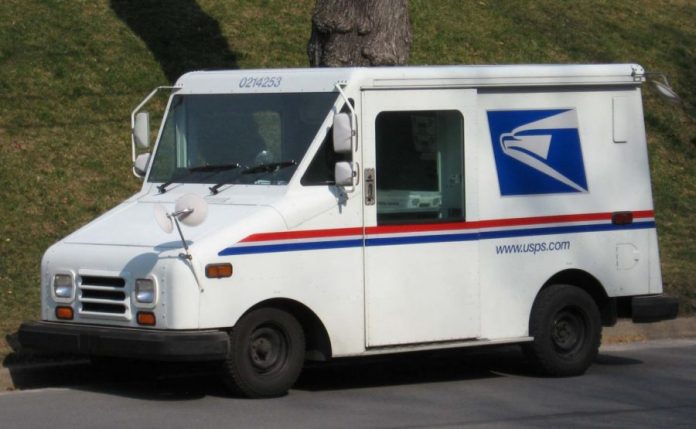
Two years after Congress wiped more than $100 billion in obligations off the U.S. Postal Service’s books, the mail service and its allies are pressing for help again, warning the agency could face a financial crisis that affects home delivery without billions more.
Top Biden administration officials, including senior adviser Steve Ricchetti, have met with representatives of the mail service’s largest union, as well as its largest customer – Amazon – and other industry groups in recent months about the agency’s persistent delivery struggles, leadership, and balance-sheet woes, according to five people familiar with the meetings, who spoke on the condition of anonymity to share details of private conversations.
The difficulties with delivery and financial troubles, some lawmakers and advocates worry, could disrupt mail-in balloting in November’s elections, along with other key functions the Postal Service performs every day.
Postmaster General Louis DeJoy and other top agency officials are set to appear before a Senate hearing on Tuesday about the chronic issues.
“There have been a lot of concerns that people have expressed about delays and inefficiencies. We’d like to get more transparency as to exactly what’s happening,” said Sen. Gary Peters (D-Mich.), chair of the Senate’s Homeland Security and Governmental Affairs Committee, which is holding Tuesday’s hearing. “Postmaster General DeJoy talked about being on a sounder financial footing now, and I have questions about that.”
A spokesperson for the Postal Service said in a statement that its finances and delivery service were linked, and the agency had spent the past few years building “stabilizing service” before launching DeJoy’s restructuring plan.
In 2022, Congress relieved the Postal Service of $107 billion of past-due and future obligations for retiree health care benefits, an amount lawmakers hoped would enable the agency to invest in long-overdue maintenance and mail delivery improvements. The agency also received $10 billion more in taxpayer funding in the 2020 Cares Act, and another $3 billion in 2022 to purchase electric delivery trucks and charging stations.
But since, the Postal Service posted a $6.5 billion loss in the 2023 fiscal year, and it’s on track to lose more than $8 billion in fiscal 2024, which ends Sept. 30. The agency, according to DeJoy’s 10-year “Delivering for America” restructuring plan, was supposed to break even in 2023 and post a $1.7 billion surplus in 2024.
“We may not have sufficient liquidity to meet all of our existing legal obligations when due while also repaying our maturing debt and making the critical infrastructure investments that have been deferred in recent years, and that are necessary to fulfill our primary mission,” the Postal Service warned in its latest quarterly report.
The financial struggles have coincided with sharp price increases on mail products – in July, first-class letter rates will have increased by 46 percent since 2018 – and dwindling on-time delivery performance.
Nearly 20 percent of nation’s first-class mail was delivered late in late March, the most recent dates for which data is available, according to Postal Service tracking. The agency’s service standard is a 95 percent on-time rate.
Certain areas, including those that could prove crucial in November’s elections, are far behind. Only 43 percent of mail was delivered on time in Atlanta in that span, for example.
Three House members, Reps. Sam Graves (R-Mo.), Mark Alford (R-Mo.) and Emanuel Cleaver II (D-Mo.), introduced legislation earlier in March that would require the Postal Service to reimburse consumers’ late fees if their bills or bill payments were caught in mail delays.
“We recognize that there have been unintended service impacts surrounding the rollout of some of our initiatives,” the Postal Service’s statement said. “We fully recognize that there is room for improvement, and we fully commit that we will improve. The recent localized service impacts that we’ve seen in places like Atlanta, Houston, and Richmond have resulted from operations management execution failures, severe employee attendance issues, gaps in transportation scheduling, and our overall inability to rapidly progress from the costly and deteriorated operating practices embedded in our legacy working environment to the high level of precision now required in our performance.”
The struggles threaten to weaken the $1.6 trillion mailing and package industries that underpin the Postal Service and its reach to more than 160 million addresses each day. The service’s powerful public-sector unions have also expressed growing concern about the agency’s financial health and ability to sustain its nearly 650,000 employees.
The Postal Service is supposed to be self-sustaining, able to finance its operations based on the sale of postage products rather than taxpayer money. But by some estimates that factor in years-long declines in mail volume, the agency could run out of cash within three years – potentially forcing it to cut back on delivery service or turn to Congress for a bailout. The liquidity crunch could also forestall the agency’s desperately needed modernization; mail clerks report to work in processing plants outfitted with decades-old machinery, and letter carriers drive trucks built in the 1980s.
“If they’re going to grow their capacity and modernize, they have to be able to invest. Short term, this would create the financial breathing room that would allow them to appropriately invest where they need to invest to create a network for the mail mix we have now and what the business will look like in the future,” Brian Renfroe, president of the roughly 285,000-member National Association of Letter Carriers, told The Post.
DeJoy – and officials from the mailing industry and labor movement – have turned up pressure on the Biden administration for more financial relief. They’ve asked the White House to send the Postal Service $14 billion, which would come from what the agency says is decades of overpayments into the Civil Service Retirement System, according to five people involved in those conversations, also speaking on the condition of anonymity to share details of private talks.
That request may only be an opening entreaty, the people say. Though the agency is asking for $14 billion now, the Postal Service estimates that it is entitled almost $100 billion more, an spokesperson wrote in an emailed statement.
The Postal Service said a financial adjustment of that magnitude could dramatically improve its delivery performance.
“Service performance does not exist in a vacuum, however, and it cannot be divorced from the financial realities of our current situation,” the Postal Service’s statement said.
Biden administration officials told postal stakeholders, including representatives from the National Association of Letter Carriers, Amazon and another mailing industry group, that the White House had referred the Postal Service’s request to the Justice Department’s Office of Legal Counsel for an opinion on the president’s authority to reimburse the agency. That opinion was pending, White House officials said, according to people familiar with the meetings.
“President Biden knows the critical service USPS provides hundreds of millions of Americans across the country every day – particularly rural communities, veterans and older Americans,” White House spokesman Michael Kikukawa said in a statement. “The president is committed to supporting USPS workers and strengthening and modernizing the Postal Service to ensure it continues serving the American people for decades to come.”
A spokesperson for the Justice Department declined to comment.
The Postal Service has long sought to access the additional larger pool of money, which is linked to how employee retirement accounts were funded when the agency transitioned from a Cabinet-level department to an independent agency in 1971.
The Postal Service, backed by economic studies dating from 2010, asserts that it overpaid into accounts that should have been covered by the federal government. In 2018, its Office of Inspector General found the value of the overpayment could be worth up to $111 billion.
The issue has ratcheted up tensions in the tightknit postal community. A representative for Amazon asked DeJoy at a recent industry-wide meeting what the e-commerce behemoth could do to help the agency secure funding and political support, according to six people at the meeting, who also spoke on the condition of anonymity to recount a private discussion.
The postmaster rebuffed the request: “I reject the premise that you could do anything to help me,” DeJoy said, according to those people in attendance.
A Postal Service spokesperson did not dispute DeJoy’s remarks, and said in an emailed statement that the agency “cannot direct or suggest advocacy activities of outside organizations, particularly not organizations which are registered to lobby.”
Amazon spokesman Scott Kelly said in a statement the Postal Service was the company’s “first and oldest business partner.”
“We’ve long supported common-sense steps led by USPS leadership and members of Congress to strengthen the USPS’s finances and operations and we’ll continue to do so where possible, because that’s what good partners do,” Kelly said.
Other mailing-industry trade groups, which represent commercial and nonprofit mailers, package shippers and printing companies, are traditionally the tip of the spear of advocacy efforts for the Postal Service on Capitol Hill and the White House. Some have declined to help the agency, citing concerns with DeJoy’s plans and consistent rate increases.
“We’re just not inclined to give the Postal Service another blank check only to see them do the same thing they did with the resources for Delivering for America,” one industry leader who has been key to postal policy discussions in Congress, told The Post.
“What industry gets from the Postal Service right now is, ‘You’ve got to wait 10 years before this will work.’ Well, no one has 10 years to wait,” said another.
(c) 2024, The Washington Post · Jacob Bogage











